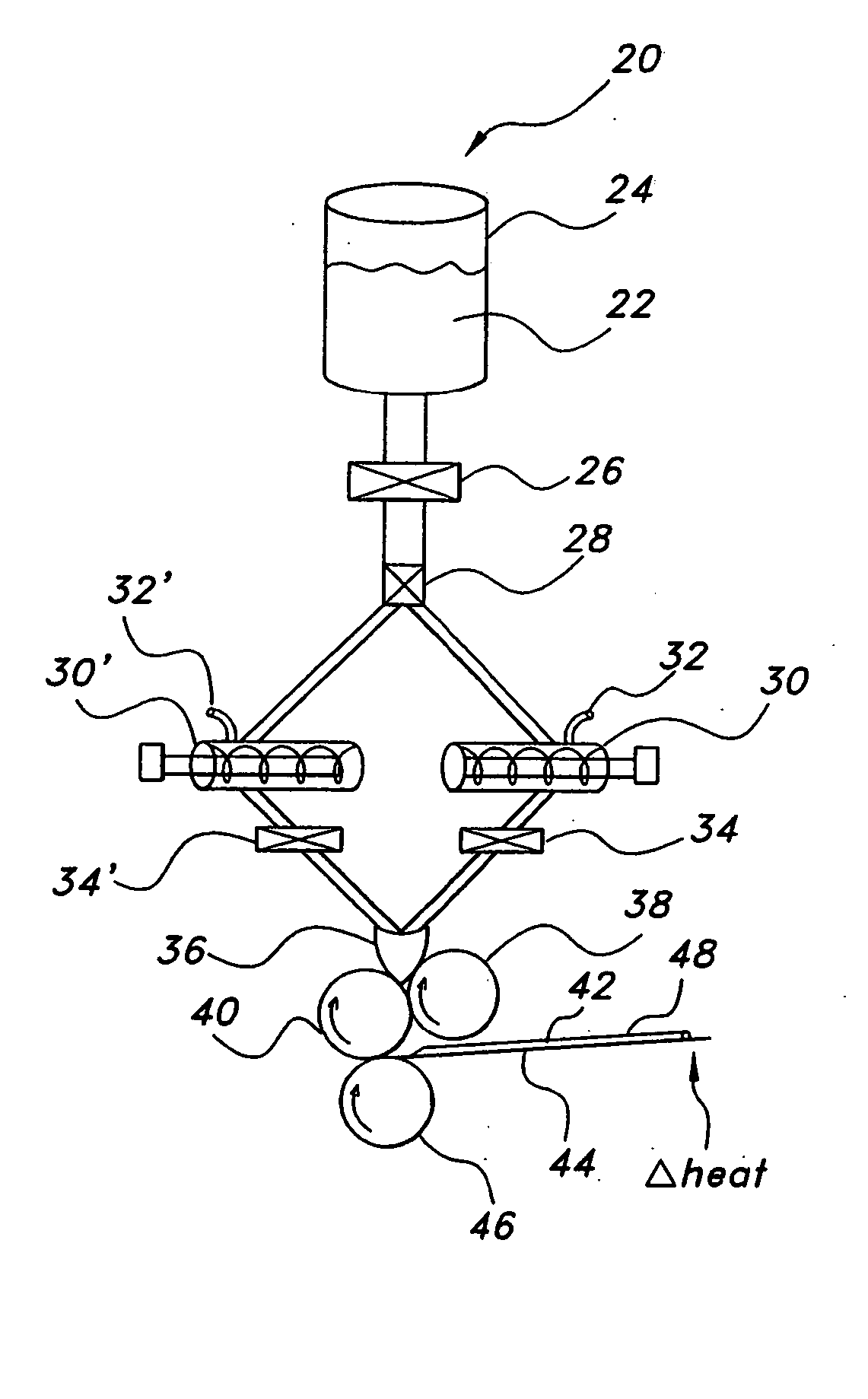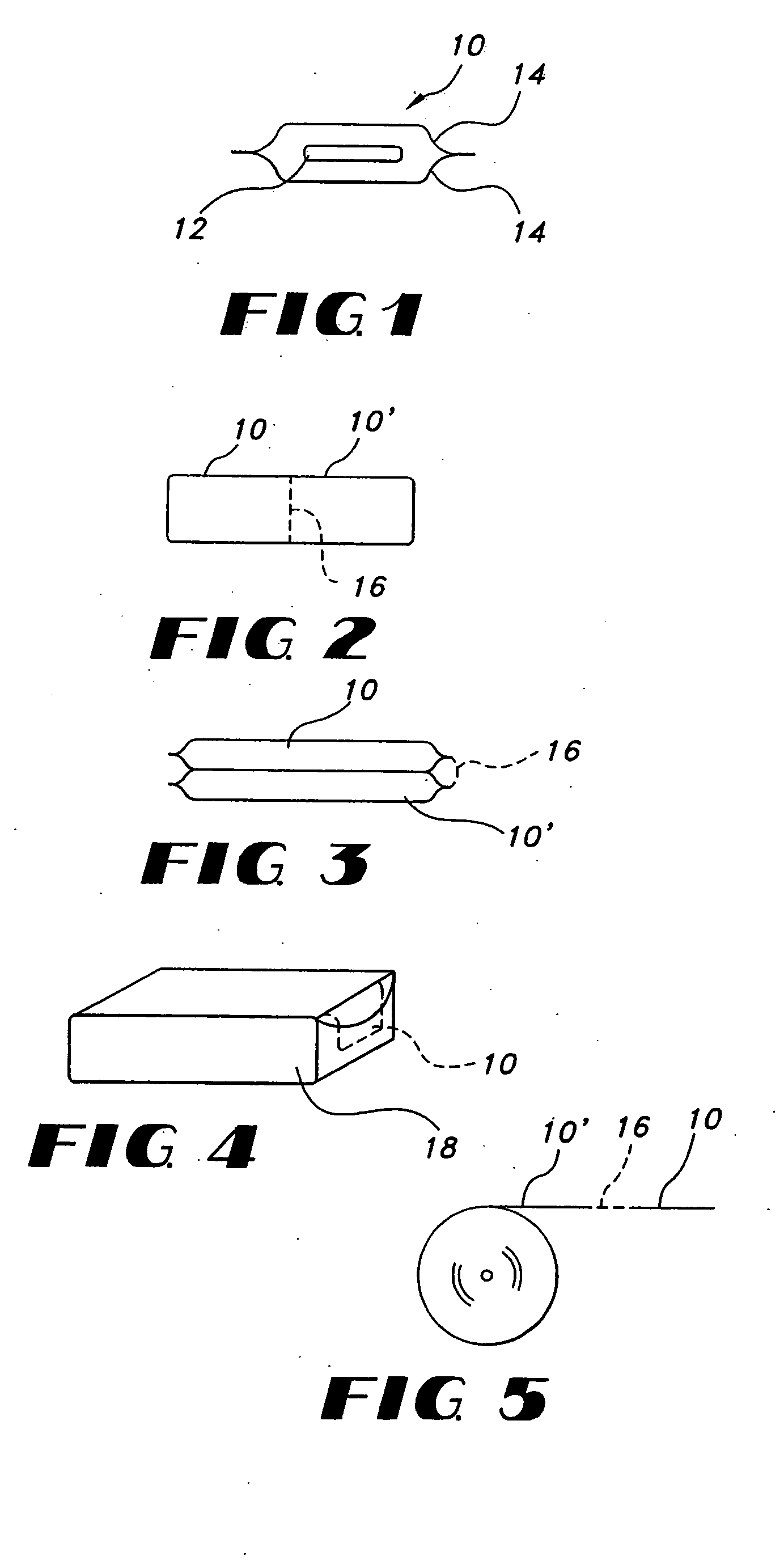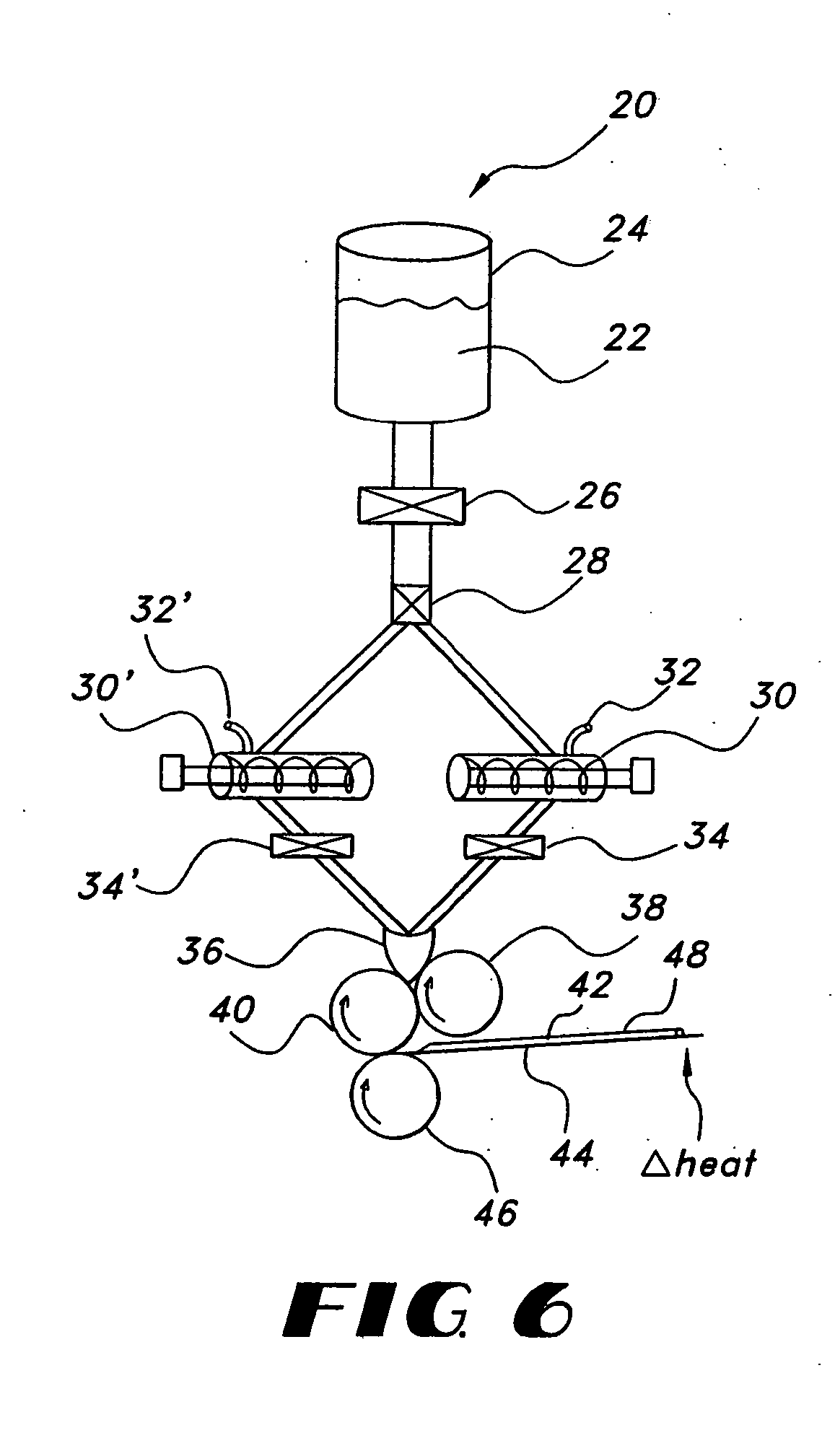Thin film with non-self-aggregating uniform heterogeneity and drug delivery systems made therefrom
a thin film, non-self-aggregating technology, applied in the direction of pharmaceutical product form change, lighting and heating apparatus, drying machines with progressive movements, etc., can solve the problems of large medication form that requires additional storage space, tablets with a tendency for inaccuracy, and many peopl
- Summary
- Abstract
- Description
- Claims
- Application Information
AI Technical Summary
Problems solved by technology
Method used
Image
Examples
examples a-i
[0186] Water soluble thin film compositions of the present invention are prepared using the amounts described in Table 1.
1 TABLE 1 Weight (g) Ingredient A B C D E F G H I Hydroxypropylmethyl 1.76 1.63 32.00 3.67 32.00 cellulose Peppermint oil 0.90 1.0 1.05 8.0 2.67 Sweetener 0.15 0.15 0.22 0.10 4.6 1.53 0.15 Polyvinylpyrrolidone 0.94 1.05 7.0 2.33 Tween 80.sup.1 0.5 0.5 2.0 0.65 11.80 1.35 0.5 11.80 Simethicone.sup.2 0.2 0.2 0.15 0.30 1.80 0.21 0.2 1.80 Listerine.sup.3 83.35 83.35 Methylcellulose 6.0 Cornstarch.sup.4 1.75 Agar 1.25 Water 42.24 93.63 39.22 768.0 280.0 88.24 768.0 Loratadine.sup.5 19.219.2 Pullulan.sup.6 6.0 Ibuprofen 38.4 .sup.1Available from ICI Americas .sup.2Available from OSI .sup.3Available from Pfizer, Inc. including thymol (0.064%), eucalyptol (0.092%), methyl salicylate (0.060%), menthol (0.042%), water (up to 72.8%), alcohol (26.9%), benzoic acid, poloxamer 407, sodium benzoate, and caramel color .sup.4Available from Grain Processing Corporation as Pure Cote...
examples j-l
[0193] Thin films that have a controlled degradation time and include combinations of water soluble and water insoluble polymers and water soluble films that allow controlled release of an active are prepared using approximately the amounts described in Table 3.
3 TABLE 3 Weight (g) Ingredient J K L Hydroxypropylmethyl cellulose 1.0 1.0 Tween 80.sup.1 0.7 0.7 0.7 Water 5.0 Aquacoat ECD.sup.2 17.0 17.0 17.5 Peppermint oil 1.0 0.4 1.1 .sup.1Available from ICI Americas .sup.2A 30% by weight aqueous dispersion of ethyl cellulose available from FMC
[0194] The components of inventive compositions J-L were combined and formed into films using the methods for preparing inventive compositions A-I above. These films were also flexible, self-supporting and provided a uniform distribution of active which permits accuracy in dosing.
[0195] The uniformity of the films prepared from inventive compositions J-L may also be tested by either visual means measuring the weights of individual dosage films, ...
examples p -
Examples P-W
[0205] Compositions P-W were prepared to demonstrate the interaction among various conditions in production of films as they relate to the present invention. The ingredients in the below Table 6 were combined and formed into a film using the process parameters listed in Table 7 below, prepared in a 6 m drying tunnel designed to incorporate bottom drying of the films. Each of the examples shows the effect of different ingredient formulations and processing techniques on the resultant film products.
6 TABLE 6 Weight (g) Ingredient P Q R S T U V W Hydroxypropylmethyl cellulose 320 320 320 320 320 320 345 345 Water 1440 1440 1440 1440 1440 999 999 Sweetener 60 60 45 Mint flavor 80 80 Propylene Glycol 50 50 50 100 100 100 100 69.3 Xanthan 22 11 11.23 10 10 10 6.9 Water / Ethanol(60 / 40)1440 Orange Flavor 42
[0206]
7TABLE 7 Film Thickness Top.sup.1 Bot..sup.1 T.sup.1 Top.sup.2 (Micron) v (m / sec) v (m / sec) (.degree. C.) v (m / sec) P1 100 0 22 75 0 P2 350 0 22 75 0 P3 350 0 40 75 0 P4 ...
PUM
| Property | Measurement | Unit |
|---|---|---|
| Fraction | aaaaa | aaaaa |
| Fraction | aaaaa | aaaaa |
| Fraction | aaaaa | aaaaa |
Abstract
Description
Claims
Application Information
 Login to View More
Login to View More - R&D
- Intellectual Property
- Life Sciences
- Materials
- Tech Scout
- Unparalleled Data Quality
- Higher Quality Content
- 60% Fewer Hallucinations
Browse by: Latest US Patents, China's latest patents, Technical Efficacy Thesaurus, Application Domain, Technology Topic, Popular Technical Reports.
© 2025 PatSnap. All rights reserved.Legal|Privacy policy|Modern Slavery Act Transparency Statement|Sitemap|About US| Contact US: help@patsnap.com



